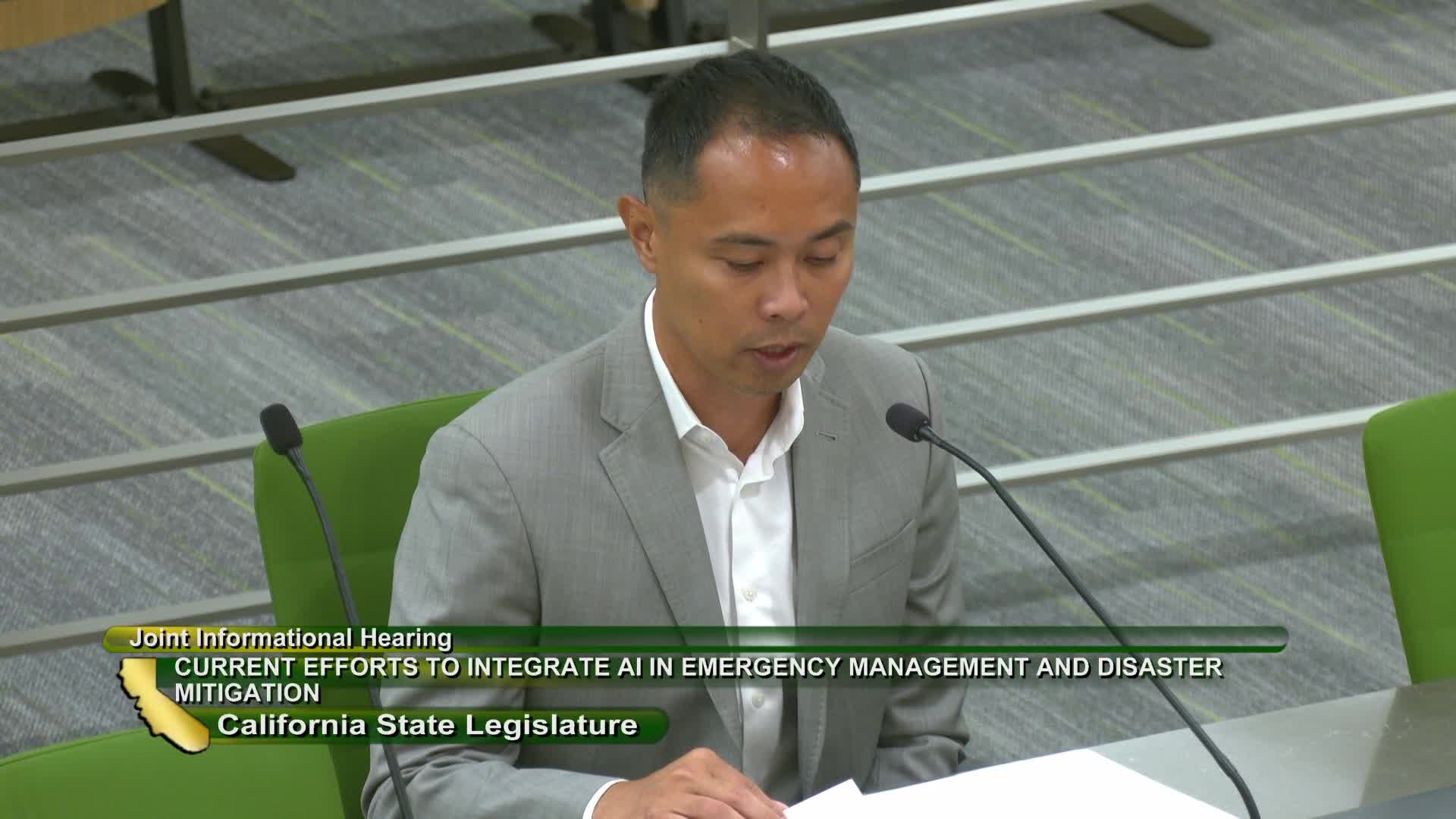AI Innovations Revolutionize Wildfire and Heat Management Strategies
August 28, 2024 | Governmental Organization, Standing Committees, California State Senate, Senate, Legislative, California
This article was created by AI summarizing key points discussed. AI makes mistakes, so for full details and context, please refer to the video of the full meeting. Please report any errors so we can fix them. Report an error »

In a recent government meeting, officials highlighted significant advancements in technology aimed at combating wildfires and extreme heat, emphasizing the importance of timely safety information and urban planning.
In 2023, SOS alerts have successfully provided critical safety information to over 30 million individuals across 120 wildfire events globally. A key tool in this effort is the wildfire boundary tracker, which utilizes artificial intelligence and satellite imagery to monitor large fires in near real-time, updating every 15 minutes. This resource is currently accessible via Google search and maps in fire-prone regions of the United States, Canada, Mexico, and Australia, with plans for further expansion.
To enhance wildfire management, collaboration with the U.S. Forest Service is underway to implement the most significant updates to fire spread models in 50 years. This new model employs machine learning to better understand fire dynamics, aiding fire authorities in training firefighters and developing effective fuel treatments, ultimately improving safety and efficiency in large-scale fire responses.
The meeting also addressed the rising public health concerns associated with extreme heat. Following the launch of extreme heat alerts last year, individuals searching for heat-related information are now provided with forecasts, safety tips, and health advisories from the global health information network.
Cities are actively seeking solutions to mitigate urban heat islands. The introduction of a tree canopy tool, which combines AI with aerial imagery, assists urban planners in identifying optimal locations for tree planting to enhance shade and reduce heat. Additionally, a pilot program for cool roofs—reflective roofing solutions—has been initiated in 15 cities, including New York, Nashville, and Melbourne. This initiative aims to map solar reflectivity in urban areas, guiding governments in deploying cool roof solutions where they are most needed.
These technological innovations represent a proactive approach to addressing the dual challenges of wildfires and extreme heat, with the potential to significantly improve public safety and urban living conditions.
In 2023, SOS alerts have successfully provided critical safety information to over 30 million individuals across 120 wildfire events globally. A key tool in this effort is the wildfire boundary tracker, which utilizes artificial intelligence and satellite imagery to monitor large fires in near real-time, updating every 15 minutes. This resource is currently accessible via Google search and maps in fire-prone regions of the United States, Canada, Mexico, and Australia, with plans for further expansion.
To enhance wildfire management, collaboration with the U.S. Forest Service is underway to implement the most significant updates to fire spread models in 50 years. This new model employs machine learning to better understand fire dynamics, aiding fire authorities in training firefighters and developing effective fuel treatments, ultimately improving safety and efficiency in large-scale fire responses.
The meeting also addressed the rising public health concerns associated with extreme heat. Following the launch of extreme heat alerts last year, individuals searching for heat-related information are now provided with forecasts, safety tips, and health advisories from the global health information network.
Cities are actively seeking solutions to mitigate urban heat islands. The introduction of a tree canopy tool, which combines AI with aerial imagery, assists urban planners in identifying optimal locations for tree planting to enhance shade and reduce heat. Additionally, a pilot program for cool roofs—reflective roofing solutions—has been initiated in 15 cities, including New York, Nashville, and Melbourne. This initiative aims to map solar reflectivity in urban areas, guiding governments in deploying cool roof solutions where they are most needed.
These technological innovations represent a proactive approach to addressing the dual challenges of wildfires and extreme heat, with the potential to significantly improve public safety and urban living conditions.
View full meeting
This article is based on a recent meeting—watch the full video and explore the complete transcript for deeper insights into the discussion.
View full meeting
